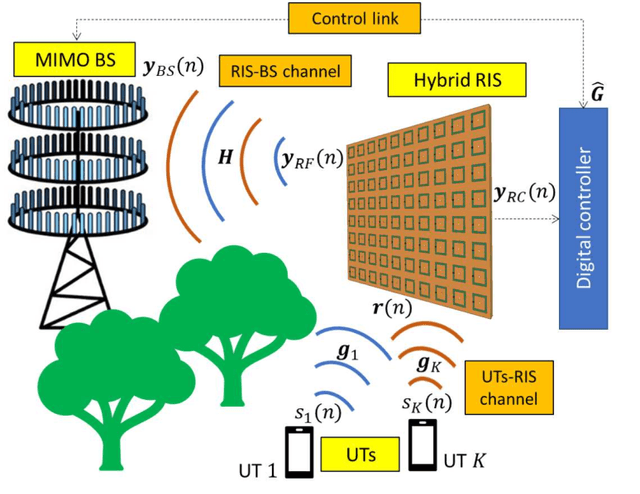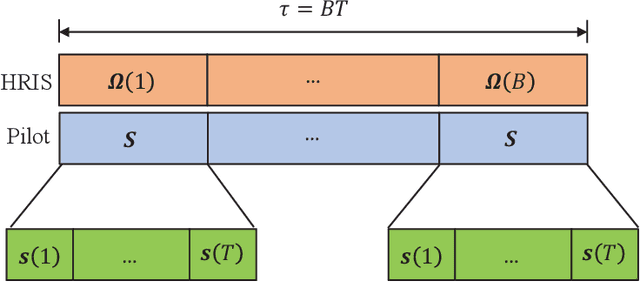Channel Estimation with Hybrid Reconfigurable Intelligent Metasurfaces
Paper and Code
Jun 08, 2022



Reconfigurable Intelligent Surfaces (RISs) are envisioned to play a key role in future wireless communications, enabling programmable radio propagation environments. They are usually considered as almost passive planar structures that operate as adjustable reflectors, giving rise to a multitude of implementation challenges, including the inherent difficulty in estimating the underlying wireless channels. In this paper, we focus on the recently conceived concept of Hybrid Reconfigurable Intelligent Surfaces (HRISs), which do not solely reflect the impinging waveform in a controllable fashion, but are also capable of sensing and processing an adjustable portion of it. We first present implementation details for this metasurface architecture and propose a convenient mathematical model for characterizing its dual operation. As an indicative application of HRISs in wireless communications, we formulate the individual channel estimation problem for the uplink of a multi-user HRIS-empowered communication system. Considering first a noise-free setting, we theoretically quantify the advantage of HRISs in notably reducing the amount of pilots needed for channel estimation, as compared to the case of purely reflective RISs. We then present closed-form expressions for the MSE performance in estimating the individual channels at the HRISs and the base station for the noisy model. Based on these derivations, we propose an automatic differentiation-based first-order optimization approach to efficiently determine the HRIS phase and power splitting configurations for minimizing the weighted sum-MSE performance. Our numerical evaluations demonstrate that HRISs do not only enable the estimation of the individual channels in HRIS-empowered communication systems, but also improve the ability to recover the cascaded channel, as compared to existing methods using passive and reflective RISs.
 Add to Chrome
Add to Chrome Add to Firefox
Add to Firefox Add to Edge
Add to Edge